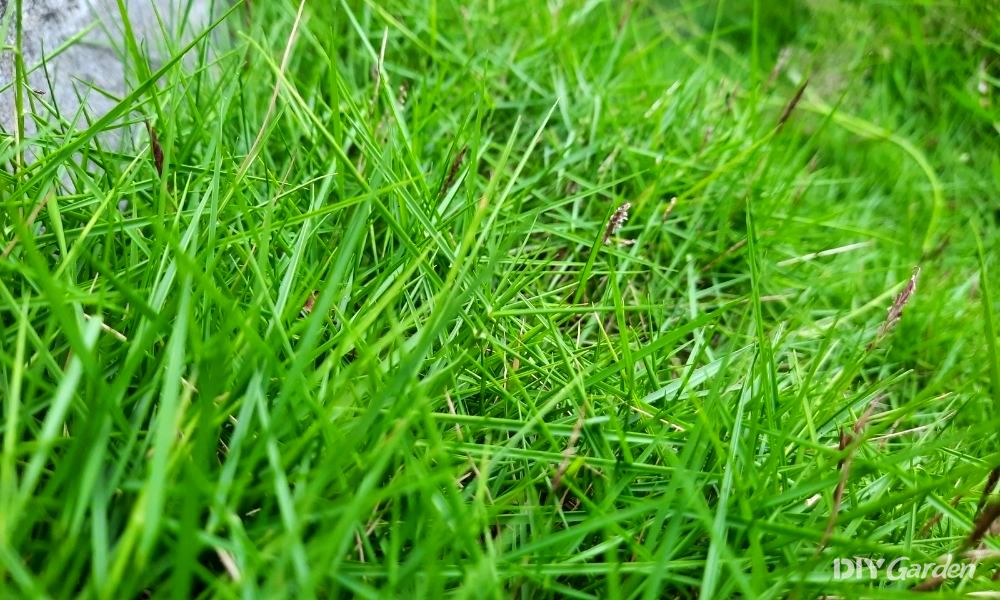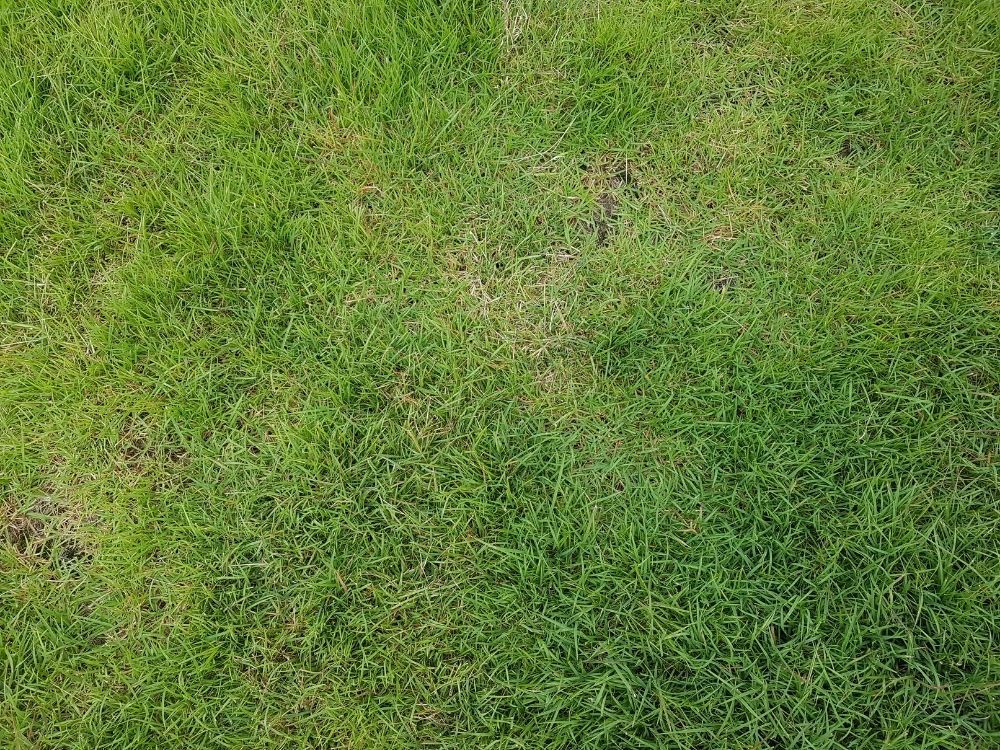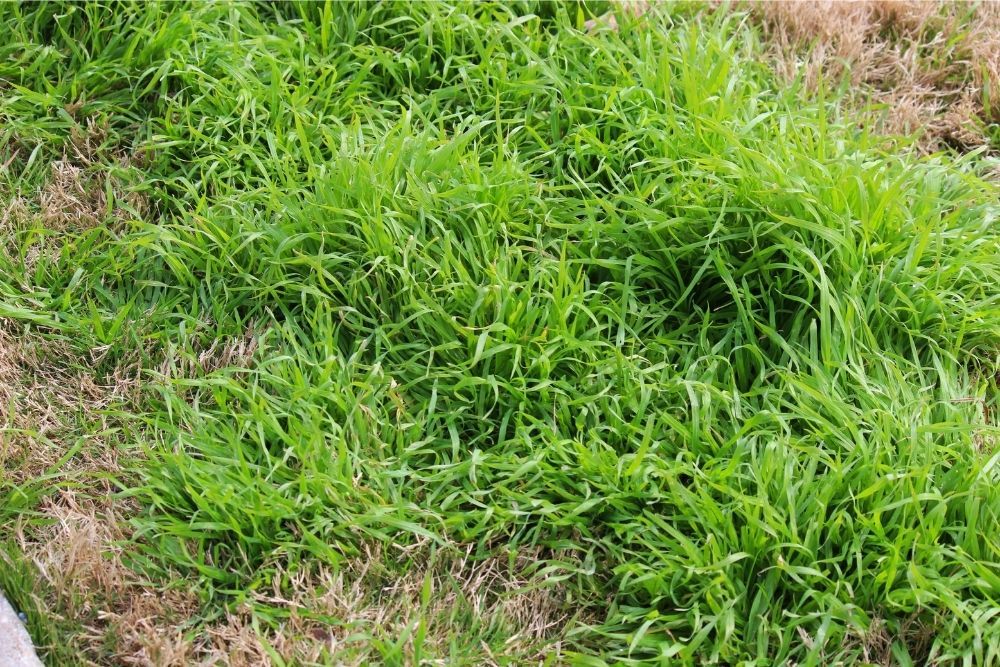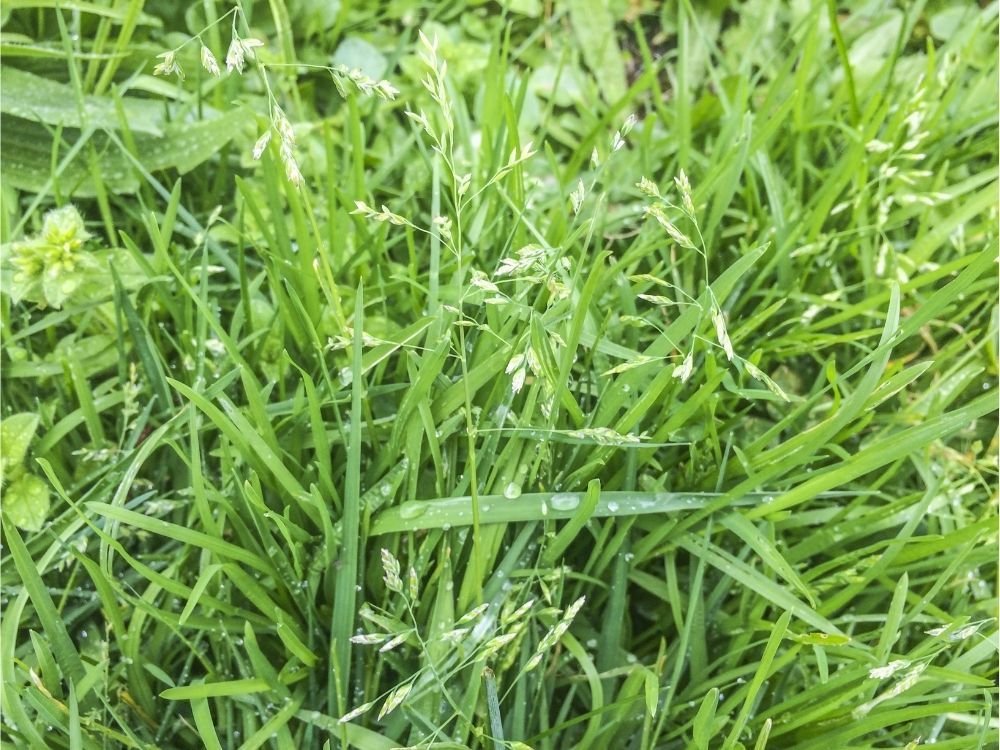
If your lawn is patchy, spongey or grows at varying heights, coarse grass may be the culprit. ‘Coarse grass’, also known as as ‘weed grass’, refers to an unwanted variety of grass growing up through your otherwise tidy lawn.
The good news is that coarse grass is relatively easy to spot. When you catch it early, you can prevent it from taking over. However, the bad news is that coarse grass isn’t quite as easy to manage as other lawn issues. It can take time and maintenance to get under control. But consistency, patience, and being well informed are the keys to success!
That’s where this useful guide comes in. If you’ve noticed coarse grass in your lawn, here’s everything you need to know about what it is, what causes it and – most importantly – how to get rid of it in the easiest way possible!
What is Coarse Grass?
‘Coarse grass’ appears when your lawn has been infected by different species of grass weeds. There are two different types of seeds that cause coarse grass – poa annua (also referred to as annual meadow grass) and creeping bentgrass.
Coarse grass is usually easy to spot, as it can have:
- Light green patches
- Yellow areas that appear burnt
- Sections that are different heights
- A spongey feel when you walk on it
Why is Coarse Grass Bad For Your Lawn?
Even though coarse grass may not always look terrible, it isn’t good for the overall health of your lawn. This is because the weeds that cause coarse grass are highly prone to diseases and pests. When they catch diseases, they can easily spread them across your entire lawn and kill off your grass completely. A good reason to get rid of coarse grass!
What Causes Coarse Grass?
If you’ve spotted coarse grass on your lawn, you’re probably wondering how it got there. As with all plants, coarse grass grows when the seeds get into your soil and sprout, but the question remains – where do these seeds come from?
Spreading the seeds can happen naturally, but coarse grass is especially common in lawns that aren’t well looked after.
Typically, coarse grass is caused by things like:
- Compacted soil – The denser your soil is, the more susceptible it is to grass weeds. Grass weeds can survive better in this terrain than other plants, so are more likely to become dominant. Aerating your lawn will make soil less compacted.
- Generally poor lawn maintenance – If your grass is cut too short, or allowed to dry out, it will become weaker which will allow for coarse grasses to take over.
- Birds – Birds can spread almost every type of seed. If birds regularly visit your lawn or fly across it, they could be responsible for coarse grass seeds finding their way into your lawn.
- Wind – In the same way that birds can spread coarse grass seeds, so can the wind. If there are patches of exposed soil on your lawn, this can make it even easier for coarse grass seeds to settle in.
- Extreme weather – Extreme weather conditions (especially freezing temperatures and seasonal changes) can cause coarse grass to appear.
How to Get Rid of Coarse Grass
Unfortunately, there’s no easy or ‘quick fix’ way of getting rid of coarse grass. Removing coarse grass always involves getting rid of the infected areas and replacing them with either new turf or grass seeds.
You can use a weed killer to kill off most types of coarse grass. However, these chemicals can kill off the rest of your grass at the same time – you need to make sure to choose a selective weed killer to stop this from happening. Nevertheless, there are natural ways of getting rid of coarse grass without using chemicals that will make things much easier.
Here are two methods to help you get rid of coarse grass, depending on how severe the issue is.
Method 1: How to Get Rid of Mild-Moderate Coarse Grass
Here’s how to get rid of mild-moderate coarse grass on your lawn in six steps.
- Apply a lawn fertiliser that’s high in nitrogen
- Mow your grass (but not too short! I recommend using a lawn mower with a tall cutting height)
- Lightly rake your lawn to remove debris and expose weeds
- Pull out the weeds by hand
- Fill in any exposed soil with topsoil
- Re-seed or lay new turf in the newly soiled areas
Method 2: How to Get Rid of Severe Coarse Grass
If your coarse grass issue is severe, you may need to apply a more intensive treatment. Here’s how to get rid of a severe type of coarse grass issue in five steps.
- Cut into the affected areas – Use a sod cutter or a gardening knife to carefully cut away the infected patches of grass. Make sure you cut in a crisscross pattern right down to the roots.
- Rake away the debris
- Remove remaining weeds by hand
- Apply topsoil to exposed patches of soil – you can add compost to topsoil to make it more nutritious. If you want to make compost at home, check out our Ultimate Guide to Composting where you’ll find some helpful tips!
- Re-seed or lay new turf in the newly soiled areas
How to Prevent Coarse Grass From Returning
Sometimes, coarse grass is completely out of our control. The seeds are always floating around our gardens and it’s easy for them to sneak their way into our lawns and sprout.
However, by regularly maintaining your lawn and keeping an eye on any issues, you can prevent severe coarse grass infestations.
To prevent coarse grass, make sure you:
- Mow regularly. I recommend checking out our Ultimate Lawn Care Guide for an idea of when to start mowing!
- Keep exposed soil to a minimum by re-seeding in spring or autumn. If your lawn is predominantly in shade during these seasons, there is specific grass seed suitable for these conditions.
- Remove weeds when they are small and re-seed the patches. Using a weeding tool can help get rid of weeds quickly, before it’s necessary to resort to chemicals. We’ve got a whole page dedicated to the best weeding tools which you might find interesting.
- Keep your soil aerated to prevent compaction. If you’d like the learn more about aerating the lawn, you’re in luck! Here at DIY Garden, we’ve dedicated an entire page to the ins and outs of lawn aeration.
Conclusion
Coarse grass isn’t easy to fix once it appears, but it can be done. As with many things, prevention is the best cure to avoid these infestations getting out of hand. By maintaining your grass and keeping an eye on any potential issues, you can maintain a prim and proper lawn that looks great any time of year!



